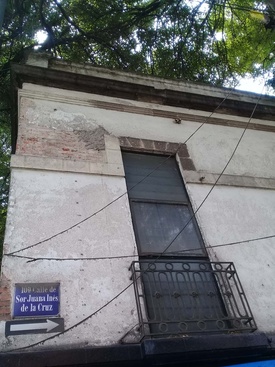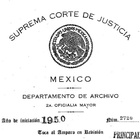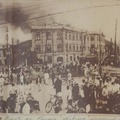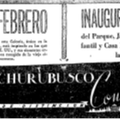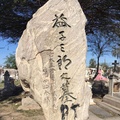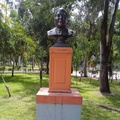Francisco Nishikawa Nakamura, a Japanese migrant residing in the Santa María de la Ribera neighborhood of the Federal District, killed his compatriot Francisco Ozaki in self-defense in Manuel Matsumoto's carpentry workshop, the latter being a witness to the events. For that act, Nishikawa was, in the first instance, acquitted by the courts of the first criminal court. Said resolution would be annulled by the public ministry for not being convincing in the light of the facts, which is why it would promote the case to the Superior Courts of Justice (TSJ) of the Federal District, the same body that, supporting the public ministry, annulled the first instance acquittal and sentenced On November 11, 1943, Nishikawa was sentenced to two years in prison for “murder in a fight.” The accused, through his defender, Mr. José Menéndez, sought protection against the decision of the Court before the Supreme Court of Justice of the Nation (SCJN) on December 2, 1943. Given the facts, the SCJN protected and acquitted to the complainant of Ozaki's death.
According to the file, by 1943 Francisco Nishikawa had been unemployed for more than six months, like the vast majority of the Japanese community residing in the capital, at the time during which Mexico was in a state of war against Japan. In this context, Nishikawa was the convener and attendee of a meeting of the Japanese community held at the house number 122 on Sor Juana Inés de la Cruz Street, in the Santa María de la Ribera neighborhood, where it was agreed to negotiate with the Mexican government an agreement through which “work would be provided at any salary” to those Japanese in critical situations.
Francisco Ozaki vehemently opposed this agreement, stating that “only assholes committed themselves in that way” ( sic ). Ozaki would then offend Nishikawa and urge him to fight, managing to exchange some blows until they were separated by other assistants. Before leaving, Ozaki threatened that he would kill Nishikawa sooner or later.
Before and after that incident, Ozaki had already repeatedly threatened to kill Francisco Nishikawa. Among the Japanese community of the time, the deceased was well known for his violent and haughty character, and was considered a “danger,” especially when he became drunk. His grudge against Nishikawa was also known: On multiple occasions, he expressed his firm intention to kill him. This behavior and statements were witnessed by Benito Mazaki Hokuto and Francisco Toshiroki, who first informed Nishikawa of Ozaki's intentions, and would later testify in the trial on behalf of the defendant.
Faced with threats, Nishikawa began carrying a knife for personal defense. It is known that prior to the events, Ozaki traveled to Ciudad Victoria, Tamaulipas, but would soon return to Mexico City. During that time, Nishikawa stopped carrying the knife and when he learned of its return, he began carrying it again.
On the day the events occurred –unfortunately the file does not specify the exact day, but it is inferred that it was a day in October 1943– Manuel Matsumoto, the only witness, relates that he invited Ozaki to eat at his house (and carpentry workshop) in eager to talk to him. Ozaki would accept the invitation and chat with Matsumoto from midday. At 3:00 p.m. of the same day, Nishikawa would arrive at that place without prior notice, in search of a carpenter (perhaps an employee of Matsumoto, or Matsumoto himself) for a job.
Nishikawa entered the dining room where Ozaki and Matsumoto were. Upon seeing Nishikawa, the deceased got up from the table and immediately urged him to fight there and at that moment he resisted; Matsumoto tried to separate them. Between insults and provocations, Ozaki walked away from Nishikawa and approached a drawer and took out a bundle of paper that he began to unroll. Matsumoto asked him what he was holding, to which Ozaki replied, “scissors.” While performing this action, Ozaki walked to the door as if to block Nishikawa's exit. Matsumoto immediately reported that Nishikawa attacked Ozaki, fatally wounding him with the knife, without Ozaki having the opportunity to reveal what he was hiding in his bundle of paper. Nishikawa fled the scene, and Ozaki bled to death in Matsumoto's presence.
Some time later, Nishikawa was arrested and prosecuted by the First Criminal Court, where he would be acquitted of the crime as it was considered that he acted in self-defense. As already noted, given the public prosecutor's disagreement with said acquittal, he made an appeal, and promoted the trial to the sixth chamber of the TSJ of the Federal District, where the acts would be considered again, and Nishikawa would be sentenced to two years in prison. for the crime of homicide, revoking the first instance trial, and declaring that he acted calmly and without fear when murdering his rival.
José Menéndez, his defender, would take his case to the SCJN, arguing that the TSJ did not correctly consider the facts, that Nishikawa acted under legitimate defense, without premeditation of the act, and under well-founded fear. The testimonies of Manuel Matsumoto, Benito Mazaki, and Francisco Toshiroki helped the SCJN consider that Nishikawa acted in legitimate defense and in a state of unrest, as Ozaki had repeatedly expressed his desire to kill Nishikawa. The eyewitness testimony of Manuel Matsumoto also helped to consider that the deceased was the one who started the fight and escalated its severity at the expense of a reluctant Nishikawa. Therefore, the court's resolution granted the protection and revoked the prison sentence.
© 2019 Carlos Uscanga, Rogelio Vargas



